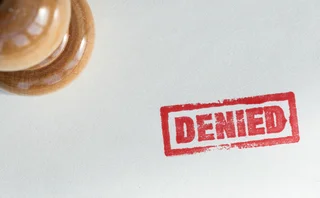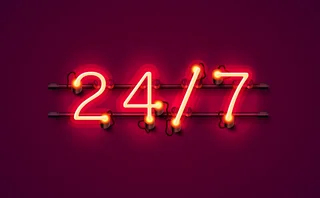LEI Myth-busting
Strapline: Industry Warehouse

The 2008 global financial crisis highlighted key information gaps in markets around the world. Regulators and risk managers were unable to quickly and consistently identify parties to financial transactions across markets to accurately assess counterparty risk exposures. The need for better entity identification became very clear.
Calls for a single legal entity identifier (LEI) standard have emanated from the data management sector for the past several years. However, it took the financial crisis to finally bring together in December 2010 a group of regulators to discuss a “collaborative approach” for building and maintaining a system of LEIs that would meet regulators’ and firms’ needs for systemic risk and data management tools.
Subsequently, the US Treasury’s Office of Financial Research (OFR) set policy for the LEI standard and asked the industry to recommend organizations to implement and operate the standard. The GFMA, in turn, recommended the International Organization for Standardization (ISO) as the standards-setting body; the Depository Trust & Clearing Corporation (DTCC) as facilities manager for collecting and validating information connected to the LEI and maintaining the public distribution system; Swift as the registration authority for registering and assigning LEIs; and the Association of National Numbering Agencies (Anna) as a key partner to register, validate and maintain LEIs for issuers and obligors.
Firms spend millions of dollars a year cleaning and mapping data relating to counterparties because of a lack of consistent reference data. The potential efficiencies and cost savings from having a better identification system for legal entities are enormous. The benefits of standardization of all types of reference data are so significant that the industry supports the Draft ISO Standard and DTCC, Swift and Anna collaborating toward a soon-to-be established LEI utility. Those benefits will accrue from improved systemic, transactional and overall risk management facilitated by the LEI.
The LEI will be a unique 20-character alphanumeric code assigned to all counterparties in financial transactions. It will not have embedded intelligence or country codes, making it neutral. Related data elements will include the exact legal name of the entity, address, country of formation, LEI status, and other metadata. Ultimate parent data is expected to be required, unless restricted by law.
Eligibility
Any legal entity that enters into a financial transaction will be eligible for a LEI. That would include transacting entities, issuing entities, reference entities, reporting entities, ultimate parent entities, and potentially other participants in financial transactions, such as exchanges, utilities, registrars, regulators, and industry organizations. Individuals are specifically excluded. The LEI will be obtained primarily through self-registration by the entities themselves. The solution will also provide for registration by third parties, such as broker-dealers, in cases where a company has not yet self-registered and an LEI must be assigned for reporting compliance.
ISO member bodies unanimously approved the ISO 17442 LEI draft standard on December 14. This now places ISO in a strong position to proceed toward final publication of the ISO LEI standard. This month, it will set a final implementation date.
In November, the G-20 assigned the Financial Stability Board (FSB) to recommend a governance framework for LEI, and to return in June with recommendations on the governance model, data confidentiality and privacy, and implementation phasing. GFMA will work with the FSB, regulators and solution providers on an early proof-of-concept phase of the LEI solution to meet expected short-term requirements to identify counterparties on OTC derivatives transactions.
DTCC is currently enhancing its existing legal entity reference data capabilities, and Swift is leveraging its registration authority platforms and capabilities to assign an estimated 20,000 to 50,000 provisional LEIs by the middle of this year. The timely delivery of this first set of provisional legal entity identifiers is necessary to support new regulatory reporting requirements being implemented for OTC derivatives transactions [in the US in 2012 and in other jurisdictions in 2013].
Also in mid-2012, a free web portal will be launched to support third-party registration of entities by broker-dealers, trade repositories, vendors and other intermediaries; self-registration by the entities themselves; self-validation by entities of information entered about them by third parties; database search capability and database download capability. The portal will be available to market participants, regulators and vendors without restriction.
It is clear that support for this international initiative is strong in both the public and private sectors, and coordination and cooperation is continuing toward a global LEI solution. Once the LEI is fully implemented and operational, the industry will have passed a great milestone in efforts to better meet risk and data management needs.
Only users who have a paid subscription or are part of a corporate subscription are able to print or copy content.
To access these options, along with all other subscription benefits, please contact info@waterstechnology.com or view our subscription options here: http://subscriptions.waterstechnology.com/subscribe
You are currently unable to print this content. Please contact info@waterstechnology.com to find out more.
You are currently unable to copy this content. Please contact info@waterstechnology.com to find out more.
Copyright Infopro Digital Limited. All rights reserved.
As outlined in our terms and conditions, https://www.infopro-digital.com/terms-and-conditions/subscriptions/ (point 2.4), printing is limited to a single copy.
If you would like to purchase additional rights please email info@waterstechnology.com
Copyright Infopro Digital Limited. All rights reserved.
You may share this content using our article tools. As outlined in our terms and conditions, https://www.infopro-digital.com/terms-and-conditions/subscriptions/ (clause 2.4), an Authorised User may only make one copy of the materials for their own personal use. You must also comply with the restrictions in clause 2.5.
If you would like to purchase additional rights please email info@waterstechnology.com
More on Regulation
Experts say HKEX’s plan for T+1 in 2025 is ‘sensible’
The exchange will continue providing core post-trade processing through CCASS but will engage with market participants on the service’s future as HKEX rolls out new OCP features.
No, no, no, and no: Overnight trading fails in SIP votes
The CTA and UTP operating committees voted yesterday on proposals from US exchanges to expand their trading hours and could not reach unanimous consensus.
Big xyt exploring bid to provide EU equities CT
So far, only one group, a consortium of the major European exchanges, has formally kept its hat in the ring to provide Europe’s consolidated tape for equities.
Jump Trading CIO: 24/7 trading ‘inevitable’
Execs from Jump, JP Morgan, Goldman Sachs, and the DTCC say round-the-clock trading—whether five or seven days a week—is the future, but tech and data hurdles still exist.
Pisces season: Platform providers feed UK plan for private stock market
Several companies in the US and the UK are considering participating in a UK program to build a private stock market composed of separate trading platforms.
How to navigate regional nuances that complicate T+1 in Europe
European and UK firms face unique challenges in moving to T+1 settlement, writes Broadridge’s Carl Bennett, and they will need to follow a series of steps to ensure successful adoption by 2027.
Nasdaq leads push to reform options regulatory fee
A proposed rule change would pare costs for traders, raise them for banks, and defund smaller venues.
The CAT declawed as Citadel’s case reaches end game
The SEC reduced the CAT’s capacity to collect information on investors, in a move that will have knock-on effects for its ongoing funding model case with Citadel.








